With CES 2022 winding down, we saw a lot of exciting products from new TVs to smart toothbrushes to new computing hardware.
The latter, in particular, caught my attention since a lot of the best products – or at least most important, in my opinion – weren't necessarily the flashiest or most luxurious. From the new Nvidia RTX 3050 to new gaming laptops with 12th-gen Intel Alder Lake chips, there is a lot here for PC gamers to be excited about, especially if you're on a tighter budget this year.
Although the new RTX 3090 Ti is getting a lot of attention, few of us will ever see this graphics card. It's already all but impossible to find high-end graphics cards, and if you can find them, you're likely being gouged on the price.
And the new Razer Blade laptops and Alienware Concept Nyx definitely received their share of publicity, budget gaming laptops and desktops still got a few major upgrades this year, which makes me more excited than ever for the budget PC gaming scene.
Nvidia's RTX 3050 is a bigger deal than the RTX 3090 Ti
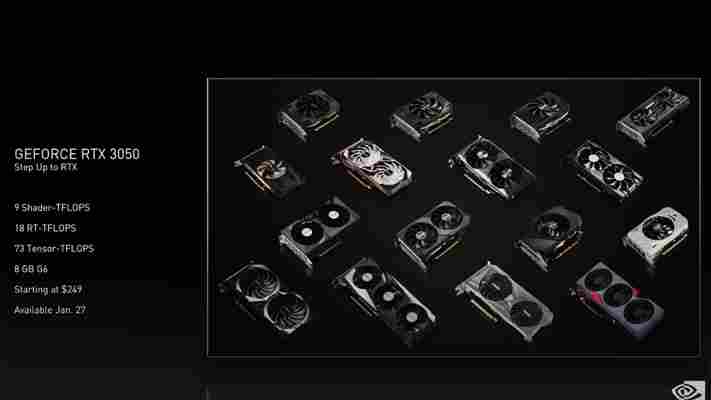
Yeah, the RTX 3090 Ti is impressive, but who cares? You're never getting your hands on that card. What's more, for the price of that graphics card, you could buy a whole new gaming PC with some decent specs.
But after nearly two years of the Covid-19 pandemic, money is going to be tight for a lot of people, and even the RTX 3060 is probably out of reach for a lot of PC gamers who want to upgrade their rigs.
The RTX 3050, on the other hand, might be hitting as close to a sweet spot as budget gamers can really hope for out of this generation. Starting at $249 (about £190/AU$350), this won't be a cheap graphics card (assuming you can find it), but it might still be something builders can splurge on and not blow a hole in a limited budget.
Even better, pre-built budget gaming PCs with an RTX 3050 will be a good bit cheaper than those with an RTX 3060 or RTX 3060 Ti, which will give more gamers access to the Ampere architecture and everything that brings with it.
Now, this likely won't be glorious ray-traced graphics like you'd get on an RTX 3090 Ti – at least not at an acceptable frame rate – but with some aggressive settings tweaks, it's not out of the question, especially with the real reason the RTX 3050 is literally going to be game-changing: DLSS.
DLSS, or Deep Learning Super Sampling, is an Nvidia technology that is only available on RTX cards, so the last-gen Turing cards and the current Ampere cards. This tech is important because it can significantly boost frame rates by rendering a frame at a much lower resolution and then using machine learning technology to scale that image up to a higher resolution.
While ray tracing on an RTX 3050 won't be particularly powerful, or even worth the performance hit you're going to take, DLSS is easily going to get the latest AAA titles running at 1080p on high-ish settings up to 60 fps.
For gamers, this will be a massive improvement over the older Nvidia GTX or AMD Radeon RX 500-series cards that most budget-minded people have been using up until now.
Say hello to DDR5
Another huge benefit for budget PC gamers is Intel Alder Lake and its support for DDR5. While DDR5 is still rather expensive off the shelf right now, manufacturers are going to get far better pricing on DDR5 for their prebuilt PCs than builders are going to find.
This means that Intel-based prebuilt gaming PCs from budget mainstays like HP are going to come with DDR5 memory, making them much more powerful than last year's versions, and there likely won't be much of a difference in the price.
Again, it's not likely that a budget HP Omen is going to start pumping out 60 fps of 4K gaming, but that faster DDR5 RAM will absolutely help things run smoother across the board. So even if you're running a PC with a GTX 1650, we're going to see a significant performance boost just from the move to DDR5.
This is also important since most budget gaming PCs typically come with 8GB RAM, which isn't as much as it used to be. Modern AAA titles can chew through 8GB of DDR4 RAM, and while 8GB of DDR5 RAM will still be somewhat restrictive, if you've got a discrete graphics card in the box with a decent (i 4GB) of VRAM, then 8GB of DDR5 RAM will definitely feel like a lot more.
Altogether, the performance bump that prebuilt gaming PCs, which are great for gamers on a budget, are going to get in 2022 is an exciting step in the right direction.
Budget gaming laptops just keep getting better
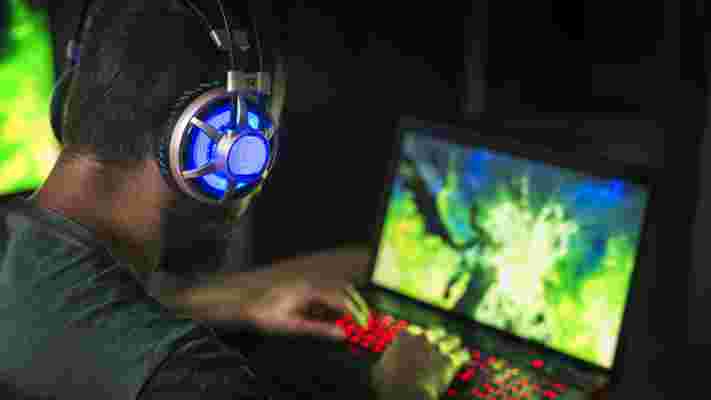
Another major reason why budget PC gaming is going to see a great year ahead is the major advances that we've been seeing in the quality of their hardware.
To get the most out of a gaming laptop, you need a discrete GPU, and with the new RTX 3070 Ti and RTX 3080 Ti mobile GPUs in a lot of mid-range and higher-end laptops, those with an RTX 3070 GPU and lower should see something of a price cut.
While we don't expect last year's Lenovo Legion 5 Pro and Asus ROG Zephyrus G15 to suddenly become "budget" gaming laptops, we still might see them go on sale for budget pricing as the new models come out later this year.
What's more, the RTX 3050 and RTX 3050 Ti gaming laptops are already doing well in the higher end of the budget market, and with refreshes coming this year that feature new Intel Alder Lake mobile chips and LPDDR5 and DDR5 memory, budget laptops are simply going to get a lot better.
And since building your own budget gaming PC at this point is going to be tough given the stock shortages of major components like graphics cards, prebuilt PCs and laptops that offer great performance are still going to be the way to go this year for gaming.
If you're going to buy a new computer for gaming at this point, you really do get the best of both worlds with laptop. Over the holiday break, I was able to show my brother a good budget gaming laptop in action. He is as much of a gamer as I am, but has stuck to consoles for the past several years since PC gaming is typically outside his budget.
Seeing how Resident Evil 8 performed at 1080p on my cheap gaming laptop was enough to impress my brother, but introducing him to the entire survival genre – something that is almost exclusively PC-based – through magnificent titles like Raft and Valheim finally won him over to give up trying to buy a PS5 and give PC gaming another try.
Thanks to all the new budget-friendly options coming down the road this year, it'll be easier for him and others to jump into the best PC games around without having to take out a loan, which is something gamers everywhere should celebrate.
Happy Birthday, Macintosh, you weren't a sure thing
I don't remember the day the Macintosh launched.
On January 24, 1984, I was still in college, consumed with papers, tests, grades, finding a way to speak to that girl in Tower B, and missed one of the most monumental launches in tech history.
To be fair, personal computers weren't all that interesting or sexy back then. My Commodore 128 was the ultimate utility device, where I wrote every single college paper and then tried to forget about it.
At school, we had computer labs where we learned BASIC or Fortran, painfully aware of the chasm that existed between these quotidian efforts and Star Trek's responsive and effortless "Computer."
Today, we remember the Macintosh with the hagiography of hindsight. It was earth-shattering (or at least screen-shattering if you believed the Super Bowl commercial ) and set the stage for all personal computing to follow.
Not so compatible
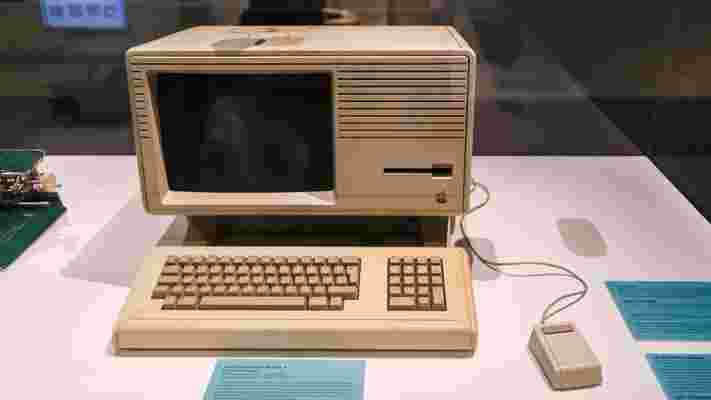
At the time, though, the media was consumed with compatibility. A few years into the personal computer revolution, most of which was still happening in offices and, to a lesser extent, academia, unveiling a computer that offered zero interoperability with the IBM PC was at least shocking.
Yes, Apple and Steve Jobs bet the farm on the Macintosh launch, but what's been lost to memory is how Apple hedged is bets a bit with the Lisa 2, 2/5 and 2/10, 32-bit updates to 1983's Apple Lisa computer. Despite a graphical desktop, no one remembers the Lisa as a ground-breaking system that made the Macintosh possible, though it clearly was.
The Mac's desktop (early reports still put "desktop" in quotes as if it was so proprietary and esoteric that it might not outlast the Mac) was even described as similar to Lisa's, though tech journalists took pains to describe in detail the act of, for instance, dragging an icon on top of an ever-present trashcan icon to delete it. Functions we take for granted are described in terms now reserved for explaining "Bitcoin" to aging parents: "The entry-level personal computer also supports a cut-and-paste feature that allows data from one display window to be electronically transferred to another.”
Despite its ability to open multiple "windows," the first Macintosh did not even support multi-tasking (the Lisa did).
The big risk

Apple and Jobs has big dreams for the Macintosh but also recognized the enormous risks of so much investment (a reported $50 million alone on advertising) and attempting things like a just-in-time supply chain (maintaining just weeks of inventory to build and deliver new Macs), something that had never been tried before in computer (or most) American manufacturing.
"Our whole premise for the Macintosh is based on the fact that current technology is not sufficient to reach the tens of millions of people who need personal computers," Jobs told ComputerWorld on in January 1984, adding, "If the people in this industry do not require radical technical innovation, then this company will not be here in two years' time."
Apple's controversial decision not to support IBM compatible systems directly (there was software that allowed Macs and Lisa computers to act as sort of dummy DOS terminals) did raise some eyebrows. Still, among the Macintosh computer's earliest supporters was Microsoft.
The company was making a sizeable investment in productivity software for young platform, which ran on an 8 MHz Motorola 68000 CPU. It clearly saw a fresh market opportunity, especially in places where the DOS-running IBM PC had yet to break through (the home, school).
"To create a new standard takes something that's not just a bit different. It takes something that's really new and captures people's imaginations. Macintosh meets that standard," said, yes, Bill Gates at the time.
Don't have much
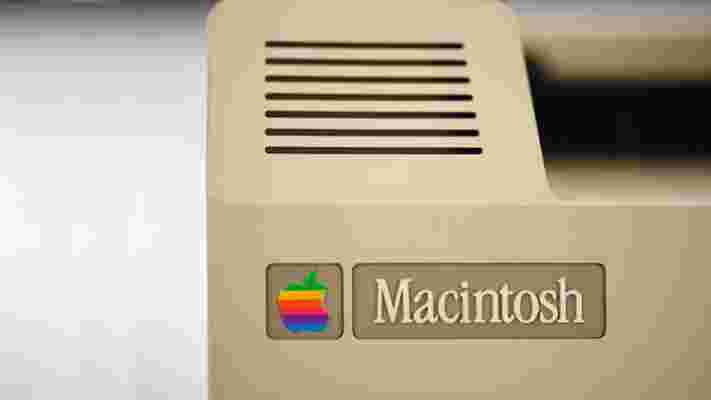
With a proprietary OS, almost no software ready at launch (it did have MacWrite and MacPaint, which was described as "a clever graphics package that uses the Mac's high-resolution screen to the fullest"), and no clear path between it and more established computing options, Macintosh was anything but a sure thing.
In those early days, though, Apple moved quickly. The 256K Macintosh was followed in short order by the Macintosh 512K, then the Macintosh SE, and by 1989, the Macintosh SE30.
I met my first Mac, a 512K model, I think, in 1986. By then there were already some black and white, GUI-based applications including Aldus PageMaker, an excellent desktop publishing application ("no one called anything "apps" in 1986) that let you build entire layouts and print them out, one half at a time, on an Apple LaserWriter printer (the two halves never lined up perfectly).
Having spent college on that old Commodore, the Macintosh was the revelation Jobs promised and Gates foresaw. I was inspired because it was inspiring.
As for the Lisa computer, it was already forgotten, discontinued in 1986.
An icon's bumpy ride
The Macintosh didn't sail on through the 21st Century. Apple's Macintosh II was a failure and the company's personal computers wouldn't regain their footing until company founder Steve Jobs, who was ousted from Apple in 1985, returned more than a decade later and relaunched Macintosh as an iconic, cotton-candy colored iMac .
No Mac, however, has quite caught the magic or sparked the zeitgeist like that first portable box. By today's standards, it's charmingly underpowered. I loved how tech press at the time described the 512 × 342 pixel resolution 9-inch screen as "high resolution" (your Apple Watch has 448 x 368 pixels). Still for 1984, it was the equivalent of the door between Dorothy's black and white world and Oz's colorful wonderland. So many new possibilities. That's worth remembering and celebrating.
PSVR 2 will be 'simply annoying' according to PlayStation creator Ken Kutaragi
Sony’s PSVR 2 headset certainly sounds promising based on its impressive technical specifications, but PlayStation creator Ken Kutaragi has dismissed the Japanese company’s second foray into virtual reality – and he doesn’t like the sound of the metaverse either.
In an interview with Bloomberg , 71-year-old Kutaragi said that the biggest issue with virtual reality headsets, like Sony's PSVR 2, is the fact the devices stop you from being in the real world.
“Headsets would isolate you from the real world, and I can’t agree with that,” Kutaragi said. “Headsets are simply annoying.”
For similar reasons, Kutaragi isn’t a fan of the metaverse and likened the idea of interacting as a virtual avatar to being the same as posting anonymously on the internet.
“Being in the real world is very important, but the metaverse is about making quasi-real in the virtual world, and I can’t see the point of doing it,” Kutaragi told Bloomberg News. “You would rather be a polished avatar instead of your real self? That’s essentially no different from anonymous messageboard sites."
Analysis: is Kutaragi simply out of touch?
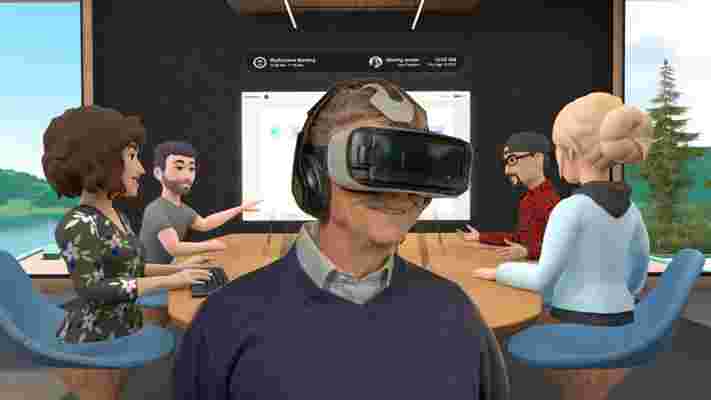
There’s certainly an argument to be made that VR is a rather solitary and restrictive experience. Wearing a VR headset does indeed isolate you from the real world, and isn’t exactly a device that will appeal to those who have family, pets, or who can’t comfortably block out their surroundings for long periods of time.
The metaverse is also rather unappealing for the same reasons. While the potential for remote working and more social-driven experiences is certainly there, we’ve already seen companies experimenting with making day-to-day activities like shopping into a virtual experience, and they honestly look worse than their real-life counterparts.
Ken Kutaragi is known for having rather outspoken opinions on technology, particularly when he was the CEO of Sony Interactive Entertainment. Kutaragi once labeled the Xbox 360 as "just an Xbox 1.5", and that it was "only going after PlayStation 2".
We still don’t have an official release date for PSVR 2 or a price point, but Sony is planning to ship its next-gen virtual reality headset before the end of 2022, supply issues permitting.
With the PS5 still incredibly hard to find, and scalpers continuing to take advantage of stock issues, Sony will need to ensure that its console is more readily available before it tries to encourage people to buy what is expected to be a costly add-on.